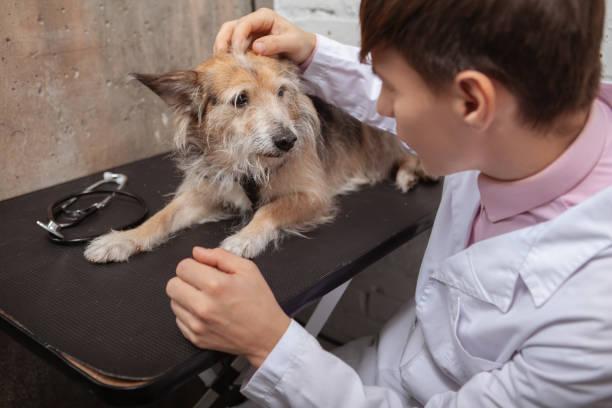Anal gland expression is a crucial aspect of maintaining your dog’s health and comfort, yet it’s often overlooked by many pet owners. These small sacs, located near the anus, can cause discomfort and even health issues if they become impacted or infected. Understanding how often to express your dog’s anal glands, along with the proper methods and maintenance, is essential for ensuring your furry friend’s well-being. In this comprehensive guide, we’ll explore the frequency, methods, and importance of dog anal gland expression.
Understanding Dog Anal Glands:
Anal glands, also known as anal sacs, are small structures located on either side of a dog’s anus. These glands produce a pungent-smelling fluid that is used for marking territory and communicating with other dogs. Normally, the glands empty their contents during bowel movements. However, some dogs may have issues with their anal glands, leading to impaction, infection, or discomfort.
Frequency of Anal Gland Expression:
How often to express dog glands ? – The frequency of anal gland expression varies from dog to dog and depends on several factors, including breed, age, diet, and overall health. While some dogs may naturally express their anal glands during bowel movements, others may require manual expression. As a general guideline, most dogs may need their anal glands expressed every 1 to 3 months. However, individual needs may vary, and some dogs may require more frequent expression, while others may need it less often.
Signs Your Dog Needs Anal Gland Expression:
- Scooting: If your dog is dragging its rear end along the ground or carpet, it may indicate discomfort caused by full anal glands.
- Excessive Licking or Biting: Dogs may excessively lick or bite at their rear end when their anal glands are full or irritated.
- Foul Odor: A strong, unpleasant odor emanating from your dog’s rear end may indicate anal gland issues.
- Discomfort or Pain: Dogs may exhibit signs of discomfort or pain when sitting, defecating, or being touched near the anus if their anal glands are full or infected.
Methods of Anal Gland Expression:
- Veterinary Assistance: Many pet owners prefer to have their dog’s anal glands expressed by a veterinarian or a trained groomer. Veterinary professionals have the expertise to perform the procedure safely and effectively.
- Home Expression: With proper instruction from a veterinarian, some pet owners may choose to express their dog’s anal glands at home. However, it’s crucial to follow guidelines carefully to avoid causing injury or discomfort to the dog.
Maintaining Anal Gland Health:
- Regular Veterinary Check-ups: Include anal gland evaluation as part of your dog’s routine veterinary examinations to detect any issues early.
- Dietary Considerations: Some veterinarians may recommend dietary changes, such as adding fiber or switching to a different type of food, to promote regular bowel movements and prevent anal gland issues.
- Hygiene: Keep your dog’s anal area clean and dry to reduce the risk of irritation or infection.
- Monitor Symptoms: Be vigilant for signs of anal gland discomfort or impaction, and seek veterinary assistance promptly if you notice any abnormalities.
Conclusion:
Dog anal gland expression is an essential aspect of canine care that should not be overlooked. By understanding the frequency, methods, and importance of anal gland expression, pet owners can help prevent discomfort, irritation, and potential health issues for their beloved furry companions. Whether you choose to have your dog’s anal glands expressed by a professional or perform the procedure at home under veterinary guidance, regular maintenance is key to ensuring your dog’s comfort and well-being.


